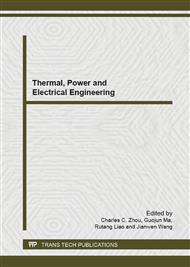p.443
p.451
p.457
p.462
p.467
p.472
p.476
p.481
p.487
CFD Simulation of Gas Residence Time Distribution in Agitated Tank
Abstract:
Gas residence time is an important parameter for gas-liquid agitated tank. Two approaches, i.e., Euler-Tracer method and CFD-DPM method are proposed for predicting gas residence time distribution (RTD) in an aerated agitated tank by using a Fluent 6.2 software package. The simulation results show that the characteristic of the gas-RTD is a curve with single peak and long tailing. Bubble size, stirring speed and gas inlet flow rate have great effect on gas-RTD in the stirred tank. Small bubbles have wider residence time distribution and stay in the vessel longer than the large bubbles and tend to complete mixing. With increasing of impeller speed or decreasing of gas inlet rate, gas-RTD become wider and have longer average gas residence time, which is in favor of gas effectively utilization.
Info:
Periodical:
Pages:
467-471
Citation:
Online since:
August 2013
Authors:
Price:
Сopyright:
© 2013 Trans Tech Publications Ltd. All Rights Reserved
Share:
Citation:


